Dear Artist,
Recently, Mark Winkelstein wrote, “A friend passed away and I have been trying to assist his family in the best means of selling some of his originals. He is the fairly significant Hungarian-Canadian painter Gyula (Julius) Marosán (1915-2003). Any suggestions would be appreciated.”
Thanks, Mark. This is a problem a lot of families are faced with and not everyone is aware of the options and pitfalls. There are two main objectives inheritors often have for their departed–further fame and further fortune. Maximizing cash flow may mean building posthumous fame. If a deceased artist has worked with galleries or has had a substantial lifetime collectorship, these vested interests can be an aid.
In the case of Mr. Marosán, several galleries already are keeping his spirit alive. Seeking advice from galleries is the place to start. It’s common for dealers to make offers — often lowball — on “the works” or to cherry-pick and pay cash for a selection. This is actually not a bad way to go as the dealer will be motivated to control and build the prices of a finite supply. Here are a few things to think about:
Put aside personal and particular works that need to be kept in the family. With dealer consultation, eliminate substandard works and destroy them. If family members wish to be participants in potential profits, they will have to work out a legal agreement with the dealer. This can be expensive and destroy a dealer’s incentive.
Consider setting up a memorial website to honour and display the better works. Consider gifting a few choice pieces to museums. (In the Marosán situation, consider museums in both Hungary and Canada.) If no private dealer or public gallery connections can be made, consider slowly letting the works out through commercial auctions. Stop doing this if hammer prices become embarrassingly low. While commissions can be higher than in auction houses, also give consideration to leaving paintings on consignment with selected galleries. A thoughtful gesture is to make certain works available to charity fundraisers. No profit there, but you’ll make a genuine, life-affirming gesture that might have pleased the deceased.
Best regards,
Robert
PS: “Full lasting is the song, though he, the singer, passes.” (George Meredith)
Esoterica: It’s important for living artists to be constantly weeding. Destroying substandard work is not only good for the heirs, it’s good for the artist: nothing worse than mediocrity in sight. Burning, while illegal in some jurisdictions, is best. I do it quietly on cold, sentimental nights as a ceremony of sacrifice in the fireplace. Further, a quick note in the will, “Destroy all unsigned art,” saves everybody a lot of trouble and anguish. Remember, it’s always nicer to enjoy a few brilliant friends than to endure a crowd of dullards.
This letter was originally published as “What to do with Grandpa’s art?” on May 22, 2009.
Have you considered a Premium Artist Listing? With each letter, an artist is featured at the bottom of this page. The Premium Artist Listings are a means of connecting artist subscribers through their work. Proceeds from each listing contribute to the production of The Painter’s Keys.
“Love is not in our choice but in our fate.” (John Dryden)
Featured Workshop
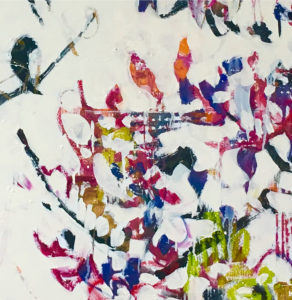 Join Ellie Harold for “Intuitive Painting: Permission to Paint Expressively,” designed especially for mature women artists of all skill levels who wish to explore this medium for soulful exploration. The retreat provides attractive accommodations (your own room!) along with lightly structured activities for centering, relaxation and low stress art-making. You’ll have plenty of free time to muse, paint, write and reflect while enjoying the colors, textures and flavors of San Miguel. This Retreat has the potential to transform not only your art but your life! You’ll return home with a specific art “care plan” to assure support for further creating. Details at www.EllieHarold.com.
Join Ellie Harold for “Intuitive Painting: Permission to Paint Expressively,” designed especially for mature women artists of all skill levels who wish to explore this medium for soulful exploration. The retreat provides attractive accommodations (your own room!) along with lightly structured activities for centering, relaxation and low stress art-making. You’ll have plenty of free time to muse, paint, write and reflect while enjoying the colors, textures and flavors of San Miguel. This Retreat has the potential to transform not only your art but your life! You’ll return home with a specific art “care plan” to assure support for further creating. Details at www.EllieHarold.com.
Featured Artist
Mary’s interest in pastel painting began during her years at Whitworth College in Spokane, WA where she majored in art and elementary education. Though she has worked in watercolor and oil as well as calligraphy, her interest has consistently turned primarily to pastel because of the medium’s potential for glowing, vibrant color and the harmony achieved in bringing together lights and shadows.

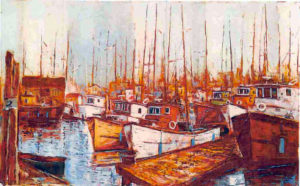
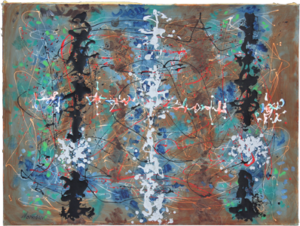
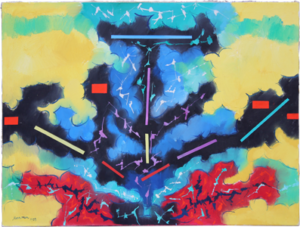
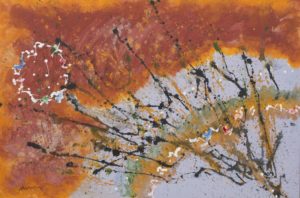


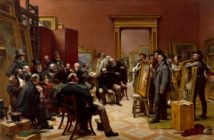
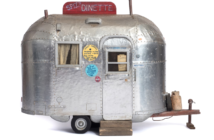
11 Comments
I love your quote:”Better to enjoy a few brilliant friends than to endure a crowd of dullards.” Applies to life as well as art! We all accumulate too many pieces and struggle with their disposal. I have given pieces, of their choosing ,to
select family members as Wedding gifts. It is so satisfying to have my art enjoyed by someone.
But probably a bonfire will be in the future!!
Donating to a charity is always an option as well.
I recently saw a company that is scanning and creating art from the underpainting of masters. This makes me cringe that this was art the artist didn’t want to share with the world so they painted over it. But now it is being sold as good art… https://morf.gallery/artwork/oxia-palus/portrait-of-a-girl/
I hope for a day when art is enjoyed for what it is, not for some historical significance. It may be possible to hang work and enjoy it daily. I think of the 17thC dutch- everyone- who covered their walls with art ,supporting artists and a sense of the world.
When I was young I used to get so irritated at my mother in law for telling me she was cleaning out things because she didn’t want to leave that mess for us to clear out. She was healthy at that time, I didn’t understand her thinking on planning what happens after her death. Now, I get it. I do it myself. Somehow clutter-guilt takes on a whole other meaning when one visualizes their kids fighting over who should do the work of dealing with all the “stuff” their parents left behind. Artists do need to keep the volume of artistic clutter manageable, so over the last few years I did some major slashing and dumping. I don’t burn because of the respect for clean air, but I slash the canvasses into tiny pieces and take the bags and boxes of garbage to the dump. It can be a freeing act that reinforces confidence in not looking around the studio and seeing duds that refused to work. It lightens the burden for both me and my kids. I suspect works that are already in galleries will just increase in price once an artist is deceased, not going to worry about them. Not today anyways. :)
Great words about artistic legacy. However, as much as I admire Robert, I have always strongly disagreed with him on burning paintings. At best it’s bad for the environment, at worst it’s straight-up unsafe.
Artist paints (in any medium) contain toxic metals such as cadmium, cobalt, nickel, and others; many of us have used lead in our careers. Even copper in fairly modest quantities is harmful to aquatic life. Burning spreads these toxins far and wide as smoke particulates. Not only do we know now that fine PM10 and PM2.5 particulates cause or aggravate lung and heart damage, but some of the pigment factors such as cadmium are particularly harmful if inhaled (carcinogenic, in cadmium’s case). Maybe it doesn’t affect you directly if your chimney draws well, but there is always someone downwind of you.
Please, choose another way to destroy inferior work than burning. I like to slash it to bits – it’s every bit as symbolically satisfying as burning :-)
Me too Tamara, I knew many artists over the years who did the same thing. Back in the day of being allowed to use backyard incinerators to burn garden refuse and cardboard, many artist told of burning paintings. I tried it ONCE… the billowing grey putrid smoke filled our back yard, I was horrified I was so stupid to think burning toxic paint would be a wise way to get rid of them. Never again did I do that, slashing and cutting them up into pieces may not be great for the landfill, but better than gassing the environment.
I, too, have great respect for Robert and Sara and appreciate the information, ideas and sense of connection to other artists they have given us.
What do you all think about recycling instead of destroying? Especially as resources are stressed. Gesso over old bad watercolor paintings for future use with acrylic paint? Gesso over bad acrylic-on-canvas paintings and start over or at least donate them to Good Will for some new artist to use?
I am a grandpa and yes,at this time I am in the process of disposing of many pieces of art including a few of my favourite ‘Genns’. Some are going to hospitals.None will be burned.
I notice that the original Grandpa’s art letter was published in 2009.I do not know if readers’ comments were shown at that time as they are with this reprint, but forgive me if I smile at the comments of those Greens among the hoi polloi
who shudder at the mention of actual burning.
2009 was roughly the time that Tony Onley garnered Canada wide publicity and support when,in a dispute with Canadian tax authorities he threatened to burn a million dollars of his prints at Vancouver’s Wreck Beach,
Just saying.
As an art therapist, my decision has been to burn stuff. Meaningful items from the past don’t require holding on to, especially when it’s truly inconvenient. And they are far too meaningful for the landfill! To save memories, take pictures of objects, large portraits and paintings one must leave in the past. Put the pictures in a special box. Or keep them on your camera. Then burn the objects themselves. My rusty burn cauldron is a bit of an altar for me.
Yard sales work for me. Remove your signature and keep the price under $10.00. It is always surprising what people will buy. Better than a bonfire and the proceeds will buy some good coffee you can sip by a small fire.
I have Julius Marosan “Autumn” that I inherited. It is is not my style of art and I am looking for a buyer. Its a 30×48 oil and I have the original paperwork. Please email me if interested
marnie.malone@gmail.com